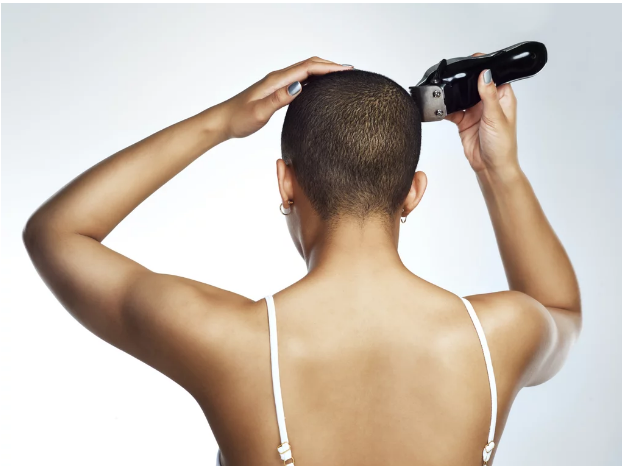The Buzzcut: For Men Only?
Imagine walking into school with a new haircut. Your normal haircut is respectable and regular for a young girl. People start staring and pointing at you as you try to make your way to your locker in peace. You wonder what stereotypes are being made about you and what others will think of you. A girl with long hair walks up to you that you don't even know the name of asks you, "why did you do it?" "did you get in a fight with your parents?"
These are some of the things that grade 8 student, Louisa Kuehne faced when she cut her hair in 2021. But why is it normal to be confronted with difficult questions when you get a new haircut?
Society has expectations for women's looks. What are those expectations? How have these expectations changed over time? This question is essential to understanding from where we have come.
To clarify how much we have progressed, I think it is necessary to talk about the Women's Suffrage Movement from 1848-to 1953. This movement gave voting rights to women in the United States, but I think this movement was not only for women to gain the right to vote, but it was eye-opening for women to show what was actually going on and how it was wrong. In the 1920s, the Women's Suffrage Movement became more popular, and more and more women were fighting for their rights.
However, there was one rebel that stepped out of the norm. In 1915, Irene Castle was a famous ballroom dancer and got a haircut now known as the “Castle Bob.” This haircut was as big of a deal as a 6-year-old walking into kindergarten with a huge back tattoo. Castle cut her hair purely for convenience, which started a trend eventually. In 1953, Audrey Hepburn -- the famous movie star from Breakfast at Tiffany's -- got a bob. Audrey Hepburn's decision to get a bob made it okay for women to wear shorter haircuts.
The next big thing that happened with buzzcuts was the movie G.I. Jane this movie came out 1997. Many of you may know this movie from Chris Rock making a joke about Jada Picket Smith and it eventually ending up with Will Smith slapping him. But when this movie came out it was sensation this was inspirational and popular. But why was this movie so big? Well in the movie the main actress has a buzzed hair cut which was not normal and the main character was also part of the army which was abnormal for a women to do. This was a very big step for women hairstyles because it showed women that it was ok to have short hair and having short hair does not mean you have a problem. It also did not make you any less feminine which most stereotypes of women with buzzcuts are about.
I was definitely more confident
-Louisa Kuehne
Source- Getty Images
So, why don’t we see many women with buzzcuts and why is it such big decision? The main reason is obvious: the buzzcut is still considered masculine because you can see that there is a greater amount of men getting a buzzcut than women. When we see women get a traditionally male haircut, it is shocking. This is why the movie G.I Jane was such a hit but also shocking. People ask questions. Is she gay? Tough breakup? Daddy Issues? Is she transitioning?
But why are these questions wrong? Well, if everyone got questioned and judged like this after they got a change in their haircut, we might all keep the same conservative haircut. There would be no diversity. No buzzcuts. No mohawks. No purple streaks. So to sum it all up, we are going back in time when we should be moving forward.
But when Louisa Kuehne did get her buzzcut, her friend gave her some advice: "I got some tips from my friend — how to look more girly, because I don't dress really girly. So everyone would think that I'm a boy, which I'm not." How much have things really changed since the 1950s?
But is it appropriate to ask questions about the buzzcut, and if so, how do you ask questions?
Well, the first thing is to imagine if you get a bowl cut and you walk into school, and everybody starts staring and pointing at you. How would that make you feel and especially since it's just a haircut?
Also, remember that for some people, it might be more personal than you think, so, going up to them and making comments like "oh, you did that" is down-lifting and rude.
Some things you could say are, "Oh, I like the new haircut,” and don't make them feel weird and awkward. The key is to always remember to be respectful. And if you do make a rude comment, you're still stuck in the 1950s.


